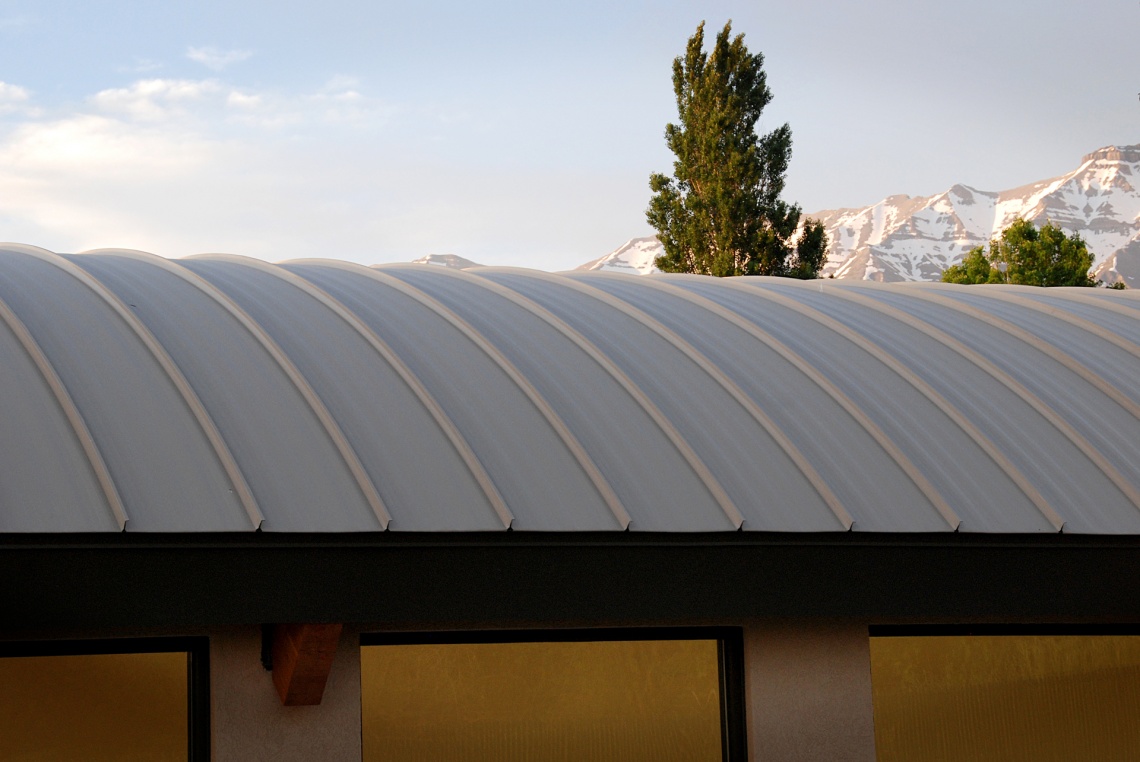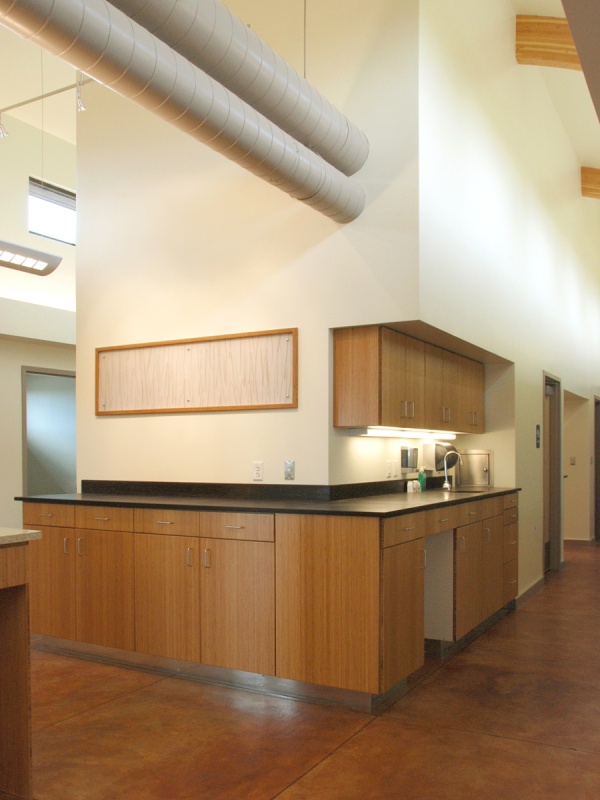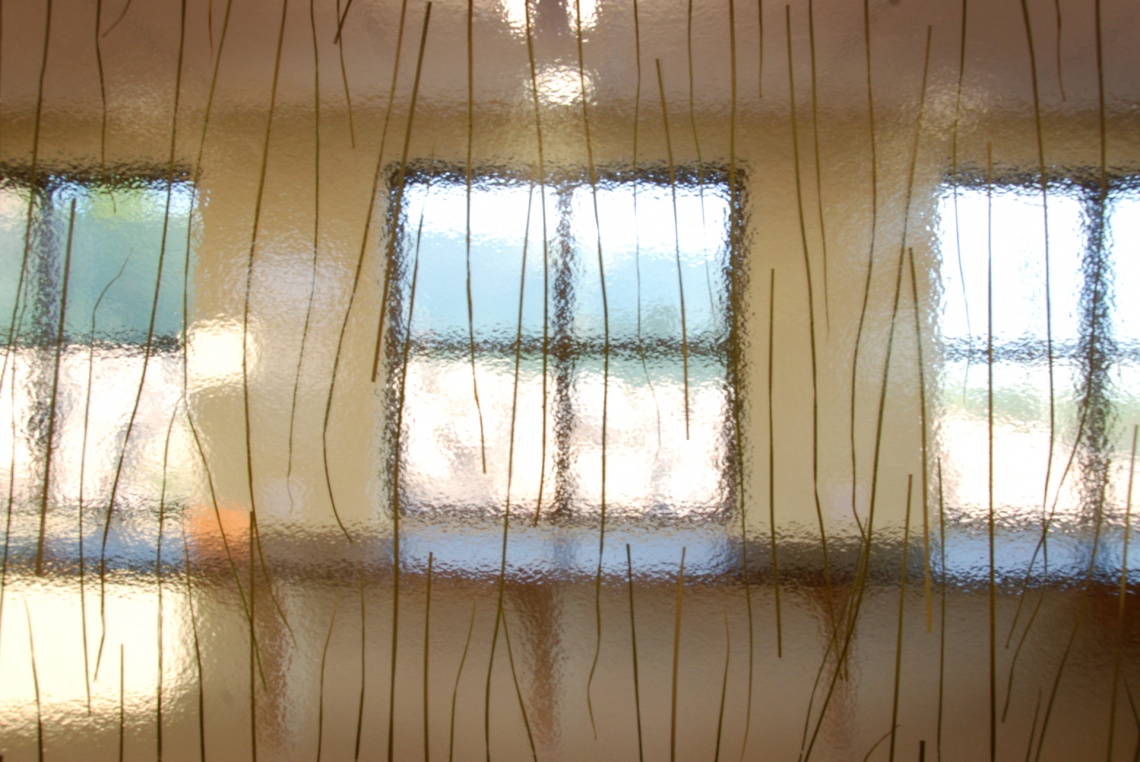
Utah Valley Clinic

LEED® Platinum Certified
The design solution is a direct response to the organizations mission “… to live in peace with our planet”.
This facility will serve as a model for the relationship of beauty, function, and environmental responsibility. As such, it will be used as an educational tool for clients, staff, and interested individuals wishing to learn more about green building or that are seeing it demonstrated for the first time. Along with teaching about the building design and systems employed, the education program will also encompass behavioral changes that we can integrate with our daily actions that are healthier and environmentally responsible.

Design
The design seeks to find synergies by incorporating strategies that provide multiple benefits in terms of aesthetics, function, budget constraints, and sustainable design objectives. For instance, the planted roof provides a beautiful element to the exterior while enhancing the thermal envelope, protecting the roof membrane from wear, reducing stormwater runoff, and creating habitat for birds and insects. On the interior, the decision to expose and finish the concrete slab eliminates the need for additional finish material. This creates a durable and easily maintained surface, works in conjunction with the spaces' radiant heating and cooling system, and provides thermal mass for the passive solar strategies. Daylight is provided to all occupied spaces as well as corridors to reduce energy demand from lighting while promoting occupant health and productivity. The lighting design works in conjunction with this strategy by incorporating daylight and occupant sensors, light level controls, and task lighting throughout.

Site
The site was selected for the ease of access for clientele. It is conveniently located on a previously developed site near a freeway off-ramp, between two park and ride lots, and on multiple bus routes which connect to the local community and universities. This visible and accessible location will expand the impact of the organization in providing for a broader base of clientele. The building is configured to optimize solar control with the long axis north-south. It is positioned on the site to maximize open space and naturally vegetated areas to the south which will serve to protect solar access as the neighboring property is developed.

Water
Climatic landscape design with native, xeric plantings is incorporated in the design. The building's roof design is configured to capture all precipitation on a planted roof to substantially reduce stormwater runoff. Paved areas are minimized and stormwater from this area will be managed on site through landscape designs incorporating vegetated swales. The building will minimize water use through high-efficiency plumbing throughout as well as controls and automated systems that will reduce waste while providing a hygienic easily maintained facility.


Energy and Atmosphere
A groundsource heat pump coupled with solar thermal will provide radiant heating and cooling within the exposed slab floor. This strategy is anticipated to provide over 40% savings over conventional HVAC systems for this building type. The space will be both heated and cooled through the slab, reducing equipment sizing while improving indoor air quality and comfort. A thermally efficient glazing system will be incorporated which couples high-performance glazing with a thermally broken window frame system.

Materials and Resources
In an effort to drive the local market toward sustainable design, we incorporated local resources wherever feasible and anticipate achieving at least 20% regional materials per the LEED credit. In addition, local labor was employed as a means to educate and provide market opportunities in a new area for sustainable construction. The main construction method for the facility is ICF (insulated concrete forms) which provides superior insulation as well as a durable, fire-proof system. All materials and components for this system are sourced and manufactured locally. Products and finishes were selected for their energy performance, durability, healthfulness, and environmental responsibility.

Indoor Environmental Quality
As a healthcare organization, occupant health as well as the health of all others involved with the project is of utmost concern. As such, we anticipate achieving all but two EQ LEED credit in this project. Within the building, materials and equipment systems were selected to provide optimum occupant health through elimination of harmful chemicals and pollutants in specified products and control the intrusion of outside pollutants post-construction. In a broader context, materials and construction systems were selected with the health of those harvesting, manufacturing, and constructing in mind.

